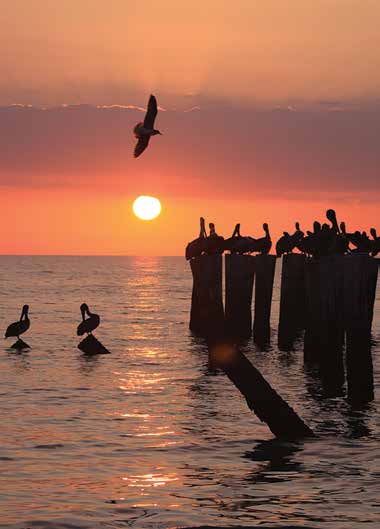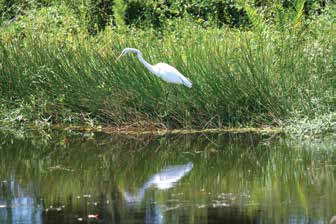ENVIRONMENTAL POLICY AT THE CONSERVANCY COMMON SENSE SOLUTIONS TO COMPLEX ISSUES
by Nick Penniman
The first three Life in Naples articles on the Conservancy of Southwest Florida have covered wildlife care and rehabilitation,
education and science. This final piece is about the best known and most public part of the Conservancy’s work: environmental policy.
Beginning in 1964 with a petition signed by thousands of citizens, elaborately unrolled before Collier County Commissioners, which stopped the “road to nowhere” – a highway planned for the barrier islands between Naples and Marco Island – the Conservancy began a long and storied tradition of advocating for smart growth policies to preserve the natural world. These policy choices over fifty years, the battles fought, and the eventual outcomes, are all set forth in my book: Nature’s Steward: A History of the Conservancy of Southwest Florida.
Today’s Conservancy policy department is staffed by six expert specialists, and guided by two experienced and capable women: Nicole Johnson who heads the Growth Management and Planning division with Jennifer Hecker who leads the Natural Resource Policy division.
As Collier County’s population explodes, growth will move east into lands that have traditionally been devoted to agriculture. County government has wisely formed a review committee to advise commissioners, but the Conservancy’s role has never been more important. Doubly so because when Governor Scott took office one of his first acts was to eradicate forty years of carefully constructed bi-partisan land use planning and regulation at the state and regional levels, pushing responsibility down to Florida’s counties.
 The Conservancy believes that growth and the preservation of natural spaces, particularly fresh water recharge of our aquifers, can be managed with smart growth policies.
The Conservancy believes that growth and the preservation of natural spaces, particularly fresh water recharge of our aquifers, can be managed with smart growth policies.
Since 90 per cent of Florida’s drinking water comes from those aquifers, water policy goes beyond just the surface of the land, and when mining, oil drilling, rampant destruction of wetlands, and urban runoff are left unchecked, the system is imperiled.
Conservancy leadership seeks to insure that water is clean, equitably distributed and capable of sustaining our natural habitat,
wildlife, recreational opportunities and a rapidly growing population.
A great example of how policy arises from sound science, is the biennial estuaries’ Report Card, which grades water quality of inlets and bays from Charlotte Harbor down to the Ten Thousand Islands in an attempt to educate both citizens and our policy makers about progress (or more notably lack thereof) in cleaning up our coastal waters.
While growth management and water availability are long-term issues, there is a more immediate threat that concerns Conservancy policy makers and many citizens living in Collier County: hydraulic fracking and enhanced acid stimulation of oil drilling sites in the Big Cypress National Preserve. The problem is simple: current regulations are outdated and irrelevant. But powerful interests hold the mineral rights to much of southwest Florida – interests that can buy politicians with petty cash – and have done so in order to rush bills written by oil industry lobbyists and lawyers through the current session in Tallahassee.
The Conservancy has been negotiating, unsuccessfully, with local sponsors of two bills to put a temporary halt to the pell-mell rush until a comprehensive study can be made of fracking in our ecologically fragile western Everglades. Concerned about the possibility that groundwater and aquifers will be depleted by the heavy water drawdown from fracking and possibly polluted by the use of publicly undisclosed chemicals, the Conservancy asked sound science be given time to weigh in to prevent an economic and ecological calamity.
According to Hecker “I think we have brought people together to understand the complex issues that face us. Public awareness leads to good outcomes and if nothing else, we have developed common sense solutions to this problem. All we need now is the political will to approach this issue carefully and scientifically.”
The employment of sound science, regional land use planning based upon ecosystem analysis, orderly development and preservation of natural resources leading to common sense solutions for the common good have always guided Conservancy policy choices…and will do so for many, many years to come.
For further information please go to www.conservancy.org.


Leave a Reply
Want to join the discussion?Feel free to contribute!